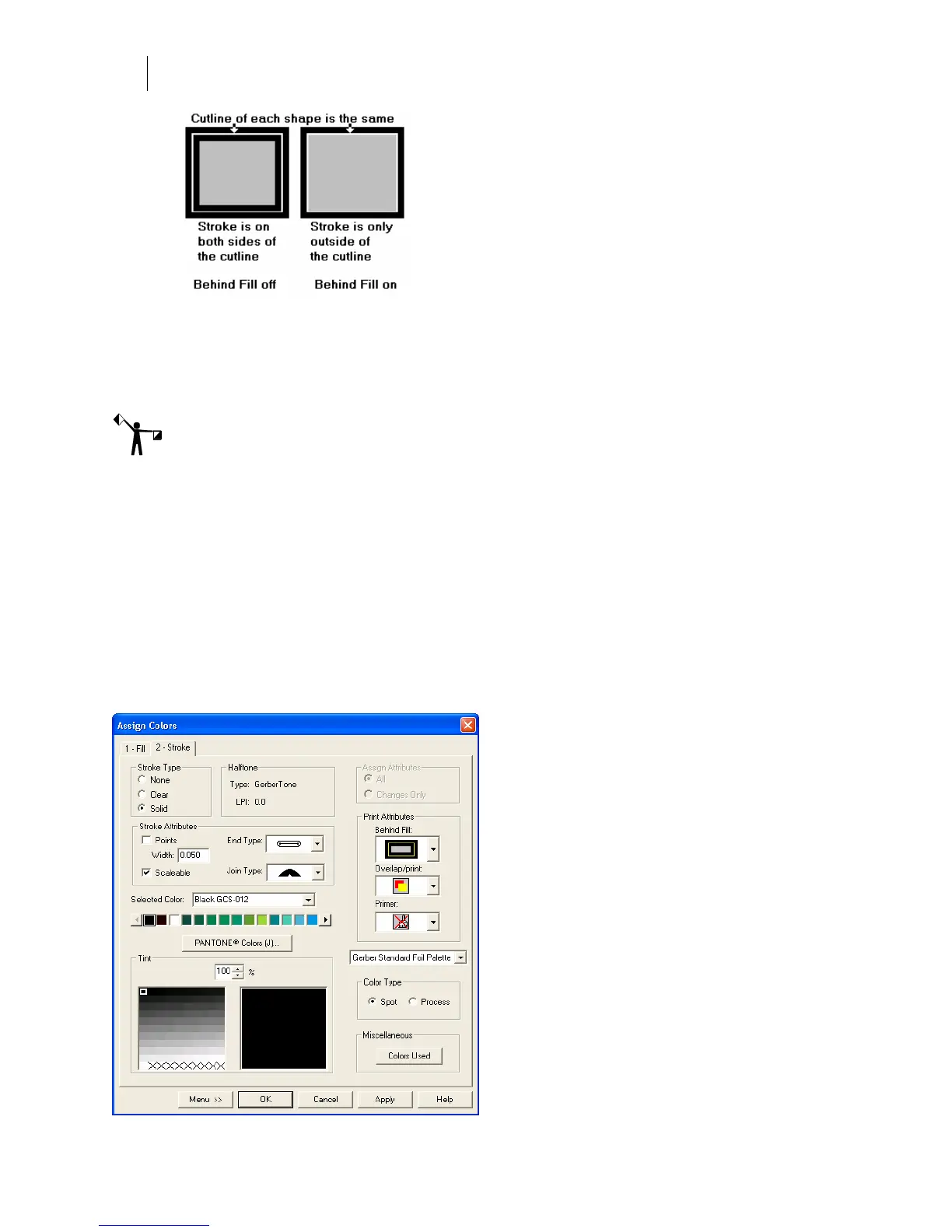236
Chapter 22:
Strokes ⎯ Adding Print Thickness to the Outline of Objects
♦ Overlap and Overprint ⎯ Strokes can be overlapped or overprinted onto objects
beneath them, butt-registered, or knocked out. See “Overlapping and overprinting
colors” for more information.
♦ Primer ⎯ Apply a primer to the stroke when you assign its fill rather than in GSPPlot.
Note: The combination of the stroke color overprinting the fill color can inadvertently create a
Spectratone color (see “Making and Using Spectratone Chart Colors.”) Depending on the
colors involved, the Spectratone color area may be so noticeable as to be undesirable. It may be
better to have the two objects butt, as shown in “Removing overlaps and overprints,” especially
if the two colors are light and a slight misregistration would not be noticeable.
For more information on using strokes for proper print registration, refer to “Solving Printing
and Registration Problems.”
Editing stroke attributes
Smart edit an object that has a stroke by double clicking it to open the Fill tab of the Assign
Colors dialog box. Click the Stroke tab and make necessary changes. Several of the stroke
features can be changed without affecting the design: Palette selection, Stroke Attributes, Print
Attributes, Color selection, Color Type, and Tint (if using a spot foil).
